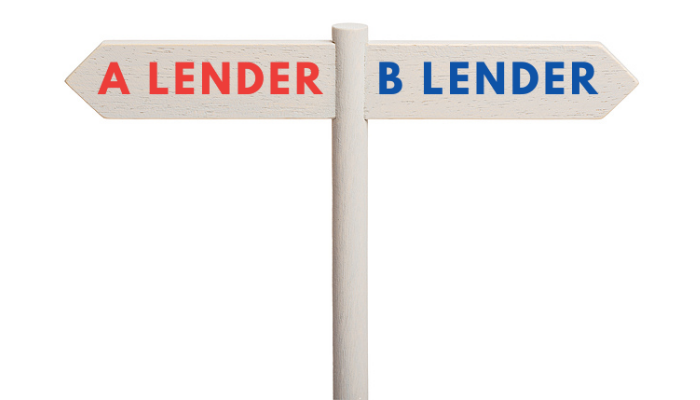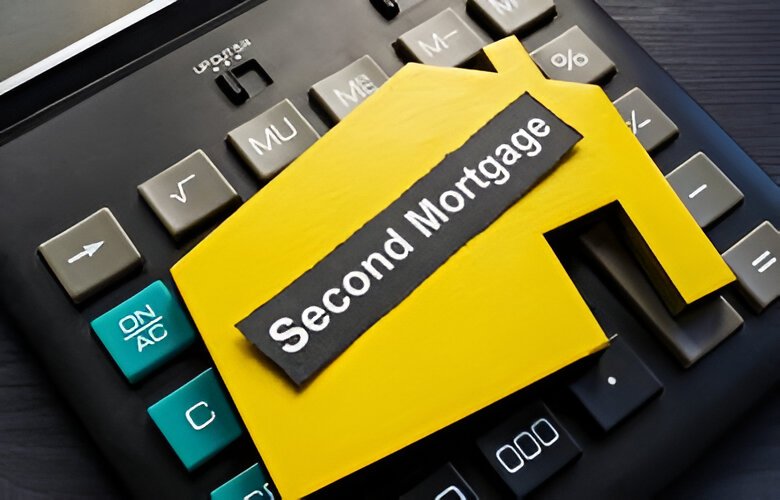A Lender vs B Lender
After putting aside money for a down payment, your first move when looking to purchase a home in Canada’s housing market should be to get pre-approved for a mortgage. You can obtain mortgage pre-approval directly from a bank or credit union, or through a mortgage broker.
This will make it easier for you to calculate how much you might be able to borrow for a mortgage, which you can then add to your down payment to determine your maximum purchase price.
Unfortunately, a lot of Canadians, particularly those who reside in pricey areas like Vancouver and Toronto, find that they are unable to secure a mortgage from A lenders because mortgage regulations are always tightening. If this happens to you, you still have choices besides conventional lenders. Other lenders, also referred to as B lenders, exist in Canada.
What is an A Lender Mortgage?
Lending tiers are typically referred to as A lender mortgage and B lender mortgage by mortgage specialists. These terminologies are now widely used outside of the world of mortgage specialists, although they can come off as unclear.
A lenders are the standard mortgage lenders who work with customers that have a strong income source and credit rating. If you meet the standards, banks, mortgage lenders, and credit unions that offer A lending chances in Canada typically offer better rates.
Clients must demonstrate their ability to pay interest at the qualification rate or at a rate that is 2 percent higher than the contract rate, whichever is higher because lenders of mortgages for banks must abide by federal requirements.
Although most A lenders are subject to provincial restrictions rather than federal laws, some are not. However, keep in mind that these lenders will have internal restrictions to protect their interests. You can easily find a list of A lenders in Canada who do not adopt the stress test rules.
What is a B Lender Mortgage?
The interest rate on a mortgage from a B lender is often higher than one from an A Lender. This is so that companies may accommodate customers with less-than-perfect credit scores and inconsistent income by lowering their entry barrier. The required down payment in Canada varies from at least 20 percent to as much as 35 percent in some circumstances, with B lender mortgage rates being considerably higher
B lender mortgages can be used by immigrants and self-employed people to buy the homes they want, even though they typically don’t have good credit or a guaranteed income. To avoid being stuck with extremely high interest rates that you cannot afford, it is important to carefully review the specific terms provided by your B lender.
When looking at alternative lenders, such as B mortgage lenders in Canada, you should inquire about things like B lender mortgage calculation, highest interest rates, cost to leave the mortgage, your prepayment alternatives, and monthly payment.
Before approving the mortgage, make sure the answers satisfy you. It might also be a good idea to hire a lawyer with prior mortgage experience to help clarify what you’re agreeing to and point out any potentially dangerous provisions in the contract.
A Lender vs B Lender: Key Differences
The main differences between lenders A and B can be seen in the minimum credit score required, the mortgage rate, and whether or not the loans are insured. Traditional banks, also referred to as A lenders, will deny borrowers with low credit scores. The primary distinctions between the two categories of lenders are described below.

Credit Score
Credit scores demonstrate your creditworthiness and are used by lenders to decide whether to accept a loan application. Your mortgage lender will have more faith in your ability to make timely loan payments the higher your credit score is.
Although the minimum credit score criteria for obtaining an A lender mortgage in Canada can vary from one A lender to another, in general, a credit score of 650 or higher is required. Depending on the bank and your consistency of income, B lender mortgages may be authorized with a credit score of 600 or less. Because B lender mortgage banks compensate for the risk with higher interest rates, they often are less strict regarding credit ratings.
Changes in Mortgage Rates
The risk that lenders take has a significant impact on A and B lender rates in Canada. People with excellent credit ratings can get A lender mortgages from the big banks, which have lower interest rates than B lender mortgages. You must put a minimum of 20% down on B lender mortgages, and you may occasionally pay higher interest rates for uninsured mortgages bearing a higher level of risk.
Insured vs Uninsured Mortgages
Mortgage default insurance is necessary for loans with minimum down payments of less than 20%. As a result, the majority of A lender mortgages are insured and have extremely cheap interest rates. Depending on the bank, B lender mortgages may or may not be insured, and this will have an impact on the monthly rate that is specified in your contract conditions.
Pros and Cons of a ‘B Lender Mortgage’
To keep things simple, we’ll keep the advantages and “disadvantages for a B lender mortgage to three main elements for each since they can differ depending on the viewpoint of one client.
Pros:
- When a client needs mortgage financing but is unable to obtain it from a traditional bank due to factors like their type of income, high debt servicing ratios (affordability), prior mortgage arrears, bad/marginal credit, prior bankruptcies or consumer proposals, unconventional down payment sources, etc., a “B lender mortgage” provides a clear solution.
- A “B lender mortgage” is often funded on terms of one to three years (as opposed to five years), giving the borrower future flexibility to better their situation and simply switch back to conventional lending sources without incurring significant penalties.
- B lender mortgages have more lenient qualification requirements and are more accepting of less-than-perfect credit scores, non-conforming sources of income (such as self-employment, commissions, bonuses, part-time employment, and contract employees), varied down payments, and debt servicing ratios.
Cons:
- It’s no secret that a mortgage from a B lender is more expensive in two ways: the interest rate and the closing expenses. The trade-off can be deemed “worth it” because these options are frequently short- to medium-term fixes that address an urgent requirement for refinance mortgage.
- In contrast to A lender mortgages, a “B lender mortgage” frequently necessitates a property evaluation for all mortgages (regardless of purchase or refinance). It’s important to note that every other expense related to closing on a home is often overshadowed by the cost of an appraisal. However, homeowners often value being reassured that the house they are purchasing is genuinely worth the price they agreed to pay.
- A 20% down payment is required for a “B lender” mortgage. This is usually not a barrier for borrowers when refinancing. However, if purchasers only budgeted for the minimum down payment requirements of 5 percent, 10 percent, or even 15 percent, it can easily have a significant negative impact on them. Given that the average property price in the province’s largest cities is very close to being “uninsurable,” all tiers may sooner rather than later require a 20% down payment. This also lessens the drawback of this point compared to earlier years.
How can a B Lender Help Me?
B lenders are an alternative for people who have been turned down by conventional A lenders or who want more flexibility, although they are frequently the lender of choice for borrowers with good credit and steady incomes. In fact, 12 percent of all outstanding mortgages in Canada are held by the four largest mortgage finance companies (MFCs), MCAP, First National, Merix, and RFA. B Mortgage Lenders are growing in popularity.
These alternative mortgage lenders might also be more sensitive to an individual’s needs, offering interest-only mortgages to help individuals with tight budgets make smaller payments each month. This gives those who would not otherwise be eligible for a conventional mortgage the chance to acquire a property.
Read More: Investment Property Mortgage








